Last Updated on December 15, 2023
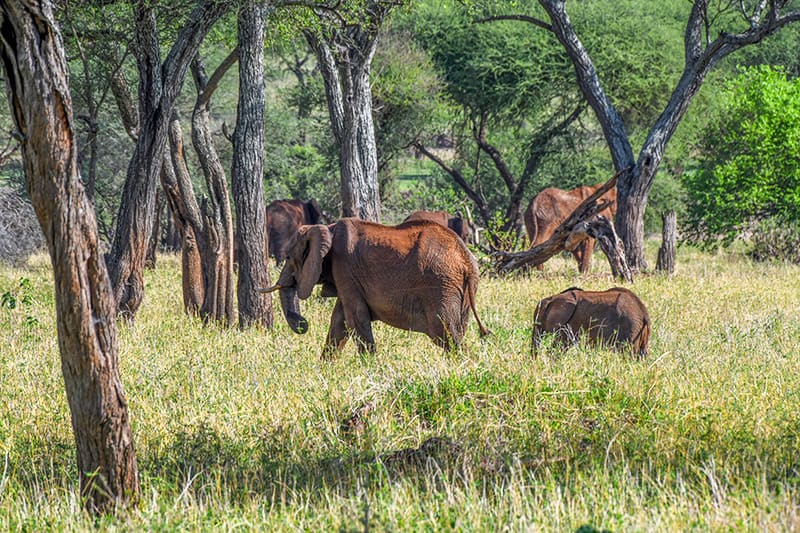
After all, the animals don’t stop at the border – a Tanzania safari in is the other half of the experience you enjoyed in Kenya…
Estimated reading time: 9 minutes
By Jim Ferri
Neighbors in East Africa’s safari belt, Kenya and Tanzania are nirvana for travelers who seek an authentic African wildlife experience.
Both are blessed with large populations of the most magnificent animals in the world. Elephants, lions, rhinos, leopards, and Cape Buffalo – the legendary Big Five – all move freely across their shared border. It’s the same for wildebeest during their legendary migrations around July and October when millions migrate at one time.
But despite Kenya’s and Tanzania’s wealth of shared animal species, some species still only exist in one country. And each is uniquely beautiful with differing terrains. They range from savannah in Kenya to the caldera of an extinct volcano in Tanzania.
My suggestion is that if you want to have a good safari experience, you should visit more than one country. After all, it can be an expensive investment so why not make the most of it?
I’ve visited both countries and enjoyed them immensely. (You can read about the first half of my safari experience in On Safari In Kenya and Tanzania). I’ve also found that a safari in Tanzania provides one of the best wildlife experiences in the world.
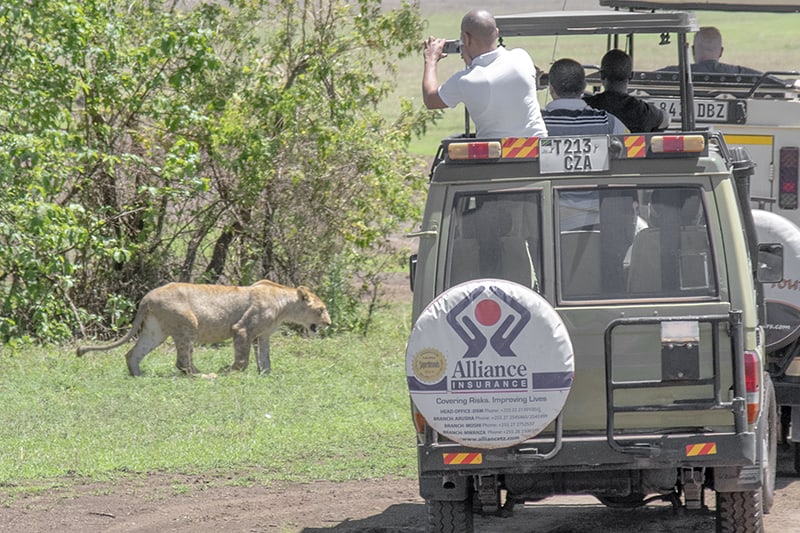
How Things Work on a Safari in Tanzania
On any safari you move about quite a bit. Many stays in lodges or hotels are for one night only, since you visit several different areas on your Tanzania safari.
A few drives are long since you are, at times, traveling vast distances. And while the vehicle is not uncomfortable, keep in mind that it was built to move over the rugged terrain. There’s a bit of bouncing about.
In your vehicle, you are under the care of a driver, who also acts as your guide and game spotter. On your twice-daily game drives, many drivers keep in touch with one another over shortwave radio.
There’s a constant chatter among them reporting different animals that have been spotted and are being photographed by their passengers. Once a driver hears of it, if he thinks it would be of interest to his group he usually takes off…often at breakneck speed. It can be quite an adventure with everybody holding on for dear life.
The mornings usually start off quietly with different vans heading in different directions. You drive around slowly for an hour or so waiting to see something, and then the radio chatter begins. Soon everybody is heading off in different directions following reports of lion sightings, elephants, mother giraffes with babies…..
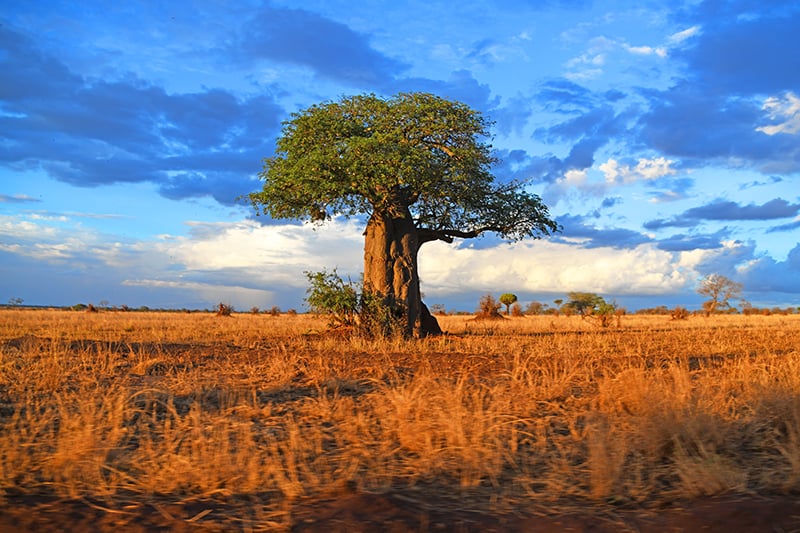
Off to Tarangire National Park
Our flight from Nairobi to Tanzania’s Kilimanjaro Airport was comfortable and provided a birds-eye view of the African savannah. It also gave us a brief look at snow-capped Mount Kilimanjaro poking through the clouds.
Once on the ground, we were immediately off to Tarangire National Park, where we would spend the first night of our Tanzania safari.
On the five-hour drive to Tarangire, we saw much of the Tanzanian countryside and people. We passed numerous villages and many Masai herding cattle, goats, and sheep. As we had seen elsewhere, both the men and women here wear flamboyantly colored clothing. Bright blues, orange, reds, and greens dot the ochre landscape.
Along with the beautiful Baobab trees, an incredible variety of colorful birds also dot the Tarangire landscape. In fact, our guide was continually pointing out another species of bird to us. It’s an ornithologist’s paradise.
In the bush in both Tanzania and Kenya, I was intrigued by the large bird nests I saw. Built by Weaver Birds, they resembled giant Christmas ornaments hanging from the trees.
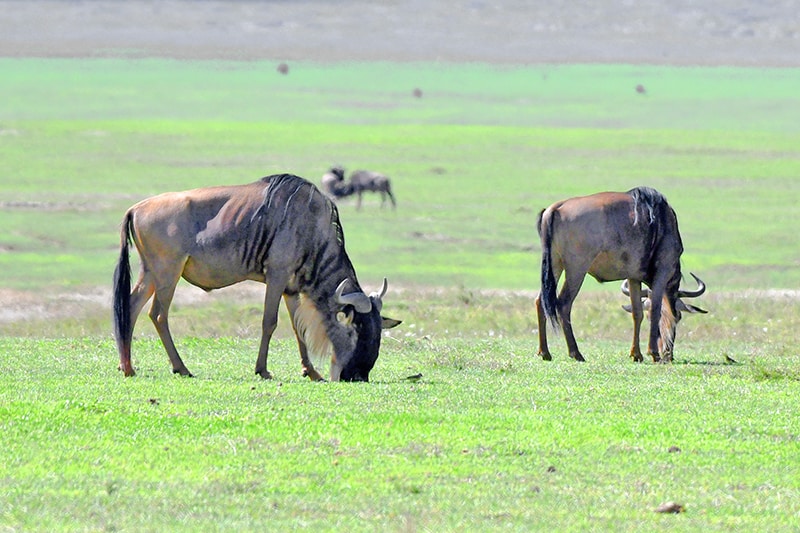
A Incredible Array of Wildlife Seen on a Tanzania Safari
Throughout the year Tarangire National Park is home to many animal species including antelope, leopards, rhinos, lions, and others. During the dry season, it swells following the mass migration of zebra and wildebeest from Kenya’s Masai Mara.
It’s also home to thousands of elephants. Hoping to find them during a game drive en route to our lodge, however, we failed to see any.
The reason, our Tanzania safari driver/guide explained, was the recent weather. “When it rains hard on the plain elephants go to the higher land,” he told us, pointing to the hills. “They then come down when it starts drying out.”
Despite the lack of elephants that day we found plenty of other things on which to train our lenses and binoculars. Antelope, lions, and a large family of ostrich chicks, among others.
But our greatest discovery was that of a two-three-week old lion cub at the base of a tree. It was midday, a time most predators sleep, and its mother hid it there. It was so small any predator couldn’t see it from a distance.
“Lions and other predators hunt at night,” explained our guide. “But at night a cub left alone will be killed by another predator. So the mother must now hunt at day to protect her cub at night.”
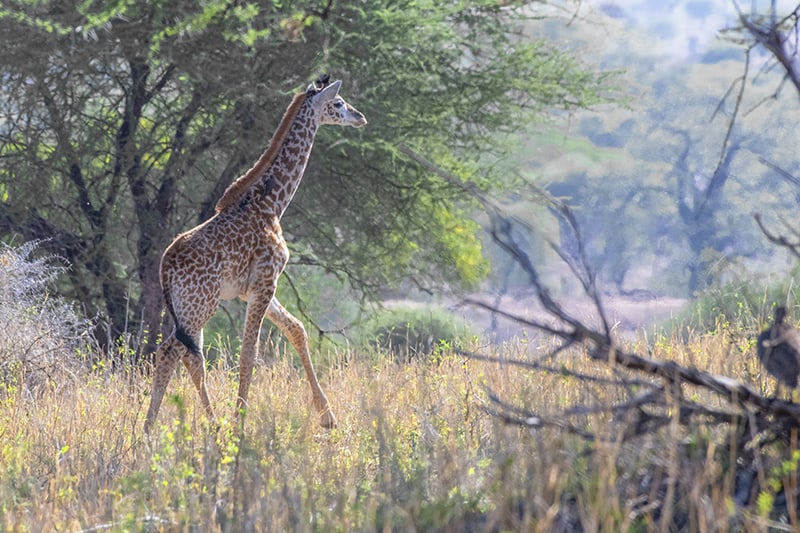
Lake Manyara National Park
Continuing to Lake Manyara National Park the next day, we didn’t have much luck finding the tree-climbing lions either. I was looking forward to seeing them since they are such a rarity.
But there were plenty of other beautiful things on this safari in Tanzania, ranging from giant hippos to small dik-diks, to keep us occupied. I’m sure birdwatchers would fall in love with the incredibly colorful Lovebirds or the 1,000+ other species of Tanzanian birds.
We now also found numerous elephants and giraffes, many with their young tagging along. Often, we’d see elephants spraying themselves with dirt to keep cool and protect their skin from the sun. Our Tanzania safari continued to provide us with countless views of a countless number of animals.
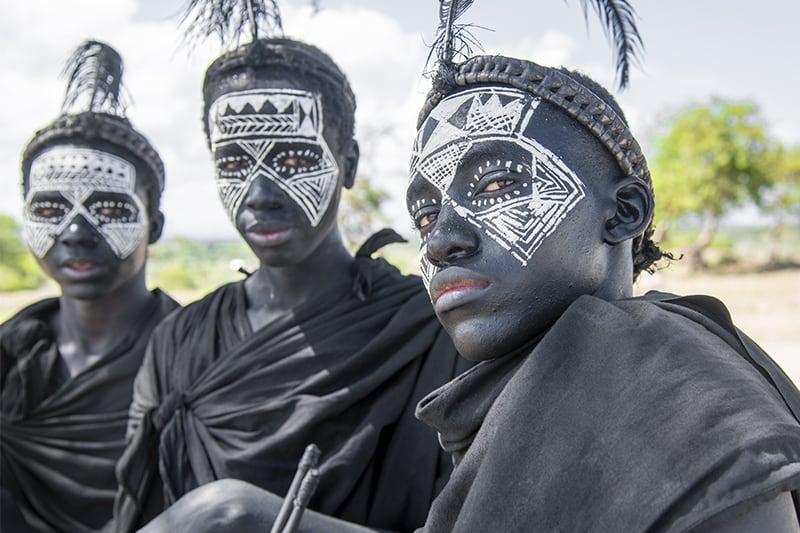
Masai Boys And Their Rites of Passage
Throughout our safari in Tanzania I continued to seen many young Masai men dressed in black, with their bodies painted black. They were often in groups of two or three and were herding domesticated animals. Our guide told me they were all Masai boys aged 12-15 undergoing a circumcision rite.
According to him, in the six months before circumcision, the boys are only allowed to wear black. They paint their bodies black and are forbidden to mix with anyone else except another boy undergoing the same rite.
50 years ago the rite had required each boy to hunt and kill a male lion single-handedly. As proof of his kill, he had to return with the lion’s head. Apparently, this was something that could take many days or weeks.
With that practice banned to preserve the species, the tribe has instituted other symbolic rituals. They now include a multi-mile run through the bush and a cleansing in the cold river before the actual circumcision.
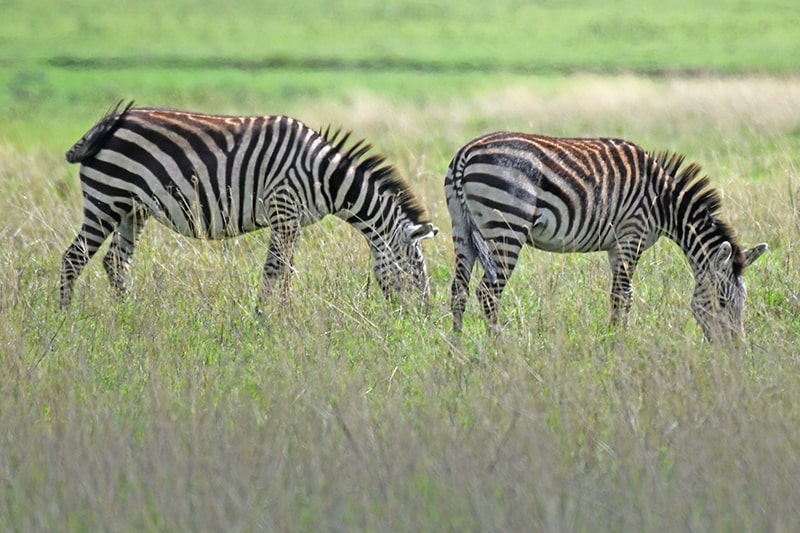
A Tanzania Safari Into Ngorongoro Crater
One place I was really looking forward to visiting was Tanzania’s Ngorongoro Crater. Actually, Ngorongoro is a caldera, not a crater, since volcanic rock and tuff collapsed into the empty magma chamber. But enough about science – suffice it to say Ngorongoro is incredibly beautiful. On any safari in Tanzania you will likely visit here.
The Ngorongoro Sopa Lodge, which sits on the edge 1800 feet above the crater/caldera, further enhanced our experience. It is a magnificent setting, especially at sunset as the last rays of the sun sweep across the landscape below. Many believe you can view it best from a lounge chair by the pool with a drink in your hand.
The caldera floor has now become grassland with a lake and is rife with wildlife.
You may also enjoy: On Safari In Kenya and Tanzania / The Galapagos Islands, a Trip of a Lifetime / Things To Do In Kenya (After Your Safari)
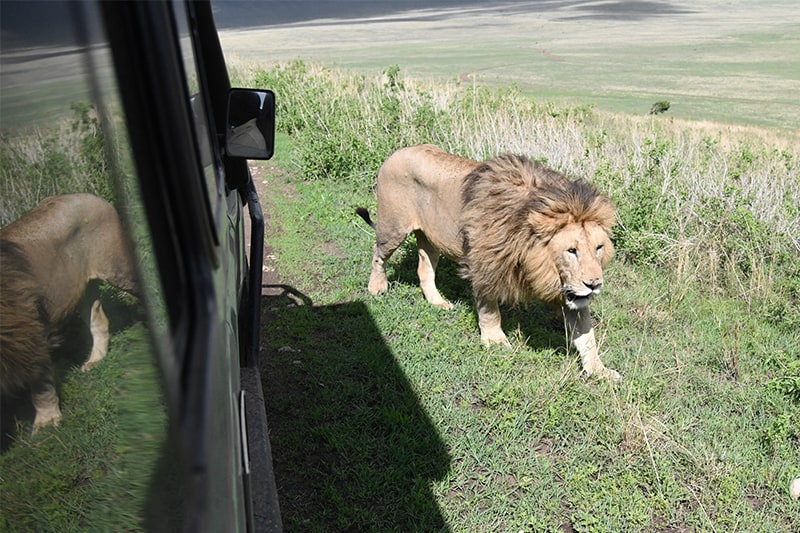
A Game Drive In the Caldera on Our Tanzania Safari
We enjoyed a game drive in one area of it before making the climb up to the lodge.
Although, as on most other days on our safari in Tanzania, our game-drive started off slow, we were soon reveling in everything we came across. After driving for nearly an hour, we heard a report of lions near a thicket. We raced over and found four lions lying on the grass.
When the other vehicles departed, we remained since our guide had spotted more lions in the dense growth. For the next half-hour, we watched as a large pride left the thicket one by one, and walked by our vehicle heading for the shade not far from it.
Our guide, knowing the pride must have eaten since they were somewhat lethargic, watched vultures that were not far off. He told us the lion’s kill might be nearby.
Within minutes we find the carcass, or what is left of it, about a half-mile away. What remained was being ravaged by hyenas and a few jackals with numerous vultures in the wings.
Oddly, it made me think of our discovery just two days earlier of the lion cub by the tree.
Now, watching the scene unfold before me on the African plain, I couldn’t help but think I had just witnessed the circle of life in a way I never thought I would.
If You Go:
Friendly Planet
Tel: 800-555-5765
www.friendlyplanet.com/

Leave a Reply